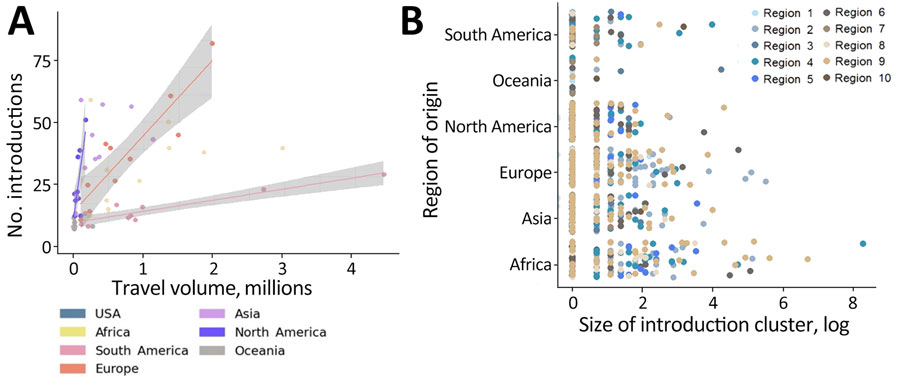Volume 31, Supplement—May 2025
SUPPLEMENT ISSUE
Supplement
Large-Scale Genomic Analysis of SARS-CoV-2 Omicron BA.5 Emergence, United States
Figure 9

Figure 9. Associations between travel from different countries and number and cluster size of SARS-CoV-2 Omicron BA.5 introductions into the United States, February–June 2022. A) Linear regresssions indicating associations between the number of introductions into the United States from different continents and international travel volume according to that continent. (B) Cluster sizes of BA.5 introductions originating from different continents into the 10 Department of Health and Human Services regions of the United States. Regions designated by the US Department of Health and Human Services are shown in Figure 3.
1Current affiliation: Program for Appropriate Technology in Health (PATH) Southeast Asia, and Hanoi Medical University, Hanoi, Vietnam.